How To Help Your Homeschooler Manage the Emotional Roller Coaster
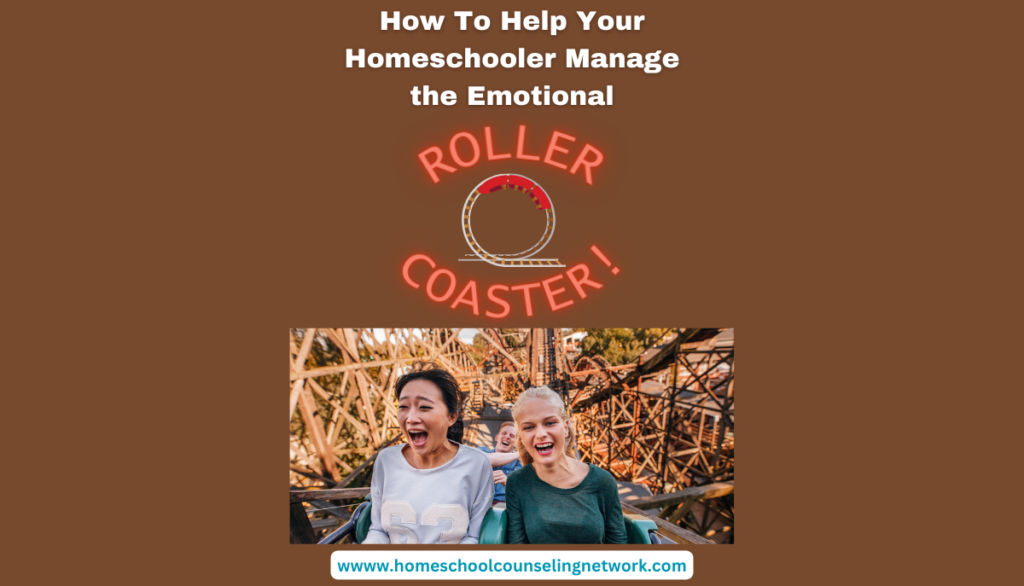
Riding the Emotional Roller Coaster
Big feelings.
Are you sure you’re tall enough to ride this ride?
Then again, are any of us?
Well, buckle up, buttercup. It’s going to get a bit bumpy but we will get through this together.
For better or worse, emotions are a part of life.
Many are amazing. Others are rather yucky. And some are so terrible we want to pull the covers over our heads and wait until the pain passes.
If only that were an option.
As grown-ups, we have the advantage of lived experience to help us navigate the not-so-friendly range of roller-coaster-style emotions. Children, on the other hand, are not as fortunate. They look to us as trusted guides for how to cope when BIG FEELINGS arise.
So how do we teach our children how to ebb with the flow and bend with the wind?
We first learn how to regulate our feelings and emotions. Then, after a little practice and a lot of perseverance, we lead by example.
The Function of Feelings
Long before we learn how to manage big feelings, we must first understand the function of feelings.
If you have ever experienced heartache, you would be hard-pressed to believe the pain you felt isn’t coming from your heart at all, but rather from your brain. Your limbic system to be precise.
The limbic system is the area of the brain that houses the seat of emotion. This network of neurons located in the upper part of the brain stem just below the cortex influences our moods, which in turn impacts our actions.
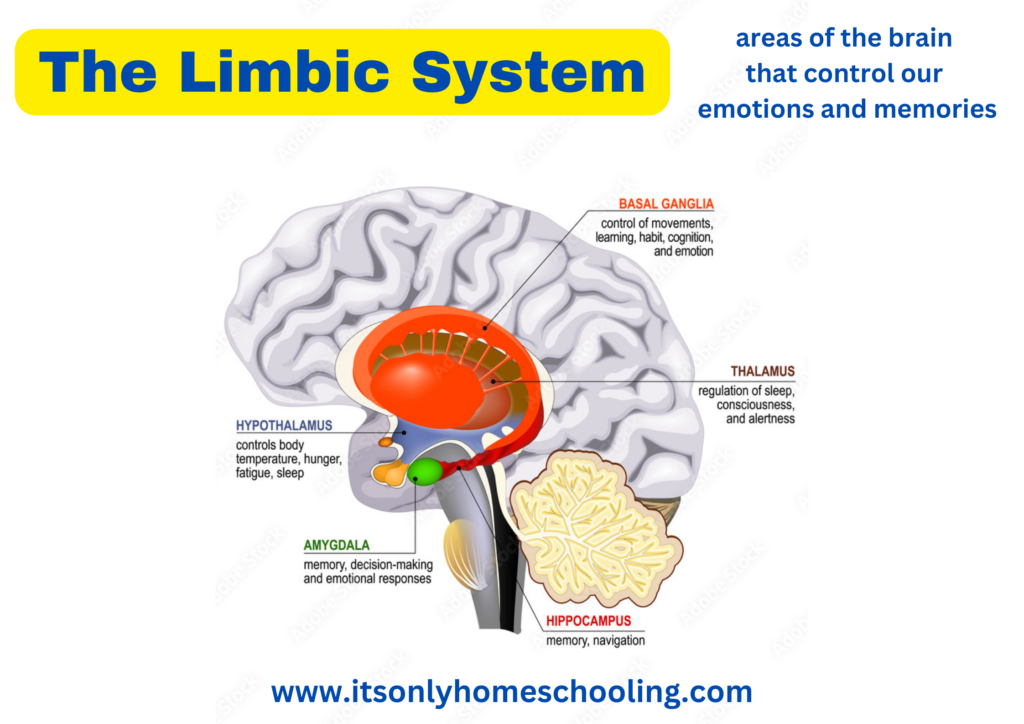
Feelings have a function, several in fact.
Protection
I love humor. You could say it’s my personality, my default setting if you will. Maybe it’s my birth order. Youngest-born children are often known for being more outgoing, gregarious, and playful.
Yet, in all honesty, I know I have my amygdala to thank for my funny bone. This almond-shaped cluster of cells located near the base of the brain is responsible for emotion, memory, and protection.
Our amygdala interprets the sensory information we receive from the outside world (i.e., what we see, hear, touch, taste, and smell). If the amygdala labels certain information as a threat it sends a warning signal to your hippocampus (i.e., which controls body temperature, hunger, fatigue, and sleep). This process then in turn releases a flood of energy more commonly known as the fight or flight response. When triggered, the body prepares to defend itself against attack.
In the presence of an actual threat, we can be thankful the amygdala does its job!
Bonding
Emotions are like glue, helping us form attachments in relationships. A mother smiles at her infant and feels a rush of overwhelming love as her infant smiles back. The quarterback on your favorite football team throws a hail-mary, game-winning pass and you high-five a fellow fan in the stands. You grieve the loss of a loved one and seek solace in the reassuring hug of a friend.
Communication
Emotions facilitate communication, helping us relay our needs, wants, and desires to others.
The bulk of communication (around 80%) is achieved through body language. Through these unspoken cues, we relay messages to others as to the emotions we are experiencing on the inside.
If an unfamiliar person enters our personal space, we may move backward a few paces creating distance. On the other hand, if we are reuniting with a loved one after a long absence, we may welcome a warm embrace.
Our facial gestures reveal much of our inner emotional experience as well. When sad, we may frown or cry; thus signaling to others our need for comfort.
Annoyed, angry, or frustrated? Our eyebrows may knit close together, our lips draw close together in a scowl, and our fists clench tightly. The message? Back off or I’m gonna blow!
Learning to both read and send these cues is an essential component of learning how to communicate effectively.
Response
Emotions can also help us make decisions. The knot in your stomach that you feel before an exam can motivate you to study. The lump in your throat before a big presentation can encourage you to rehearse your speech. Feelings influence our choices.
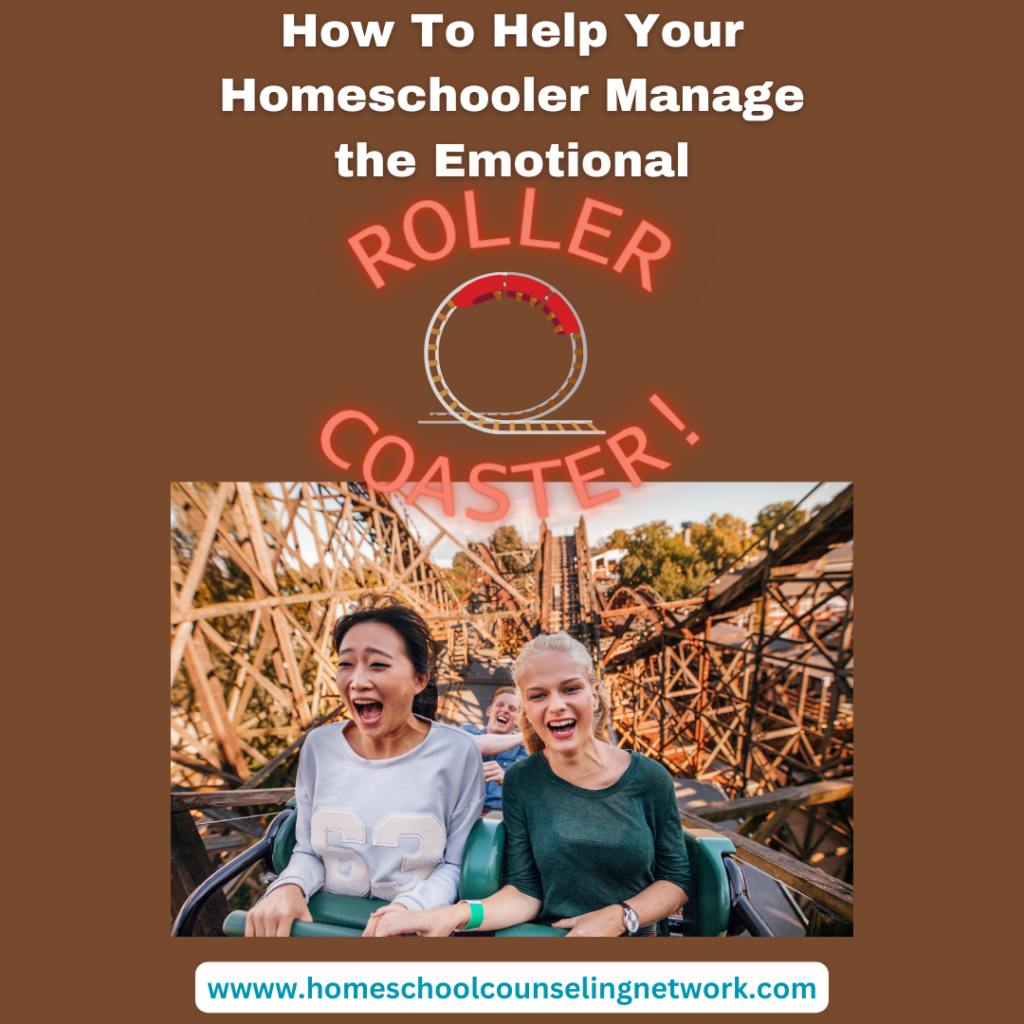
Making Friends With Feelings
If we can understand that feelings have a purpose: to keep us safe, to help us bond, to facilitate communication, and to help us make better decisions, we can take the fear out of feeling. Even better? We can permit ourselves to feel freely.
No judgment.
No labels of good or bad.
Just function and purpose.
Indicators but not dictators.
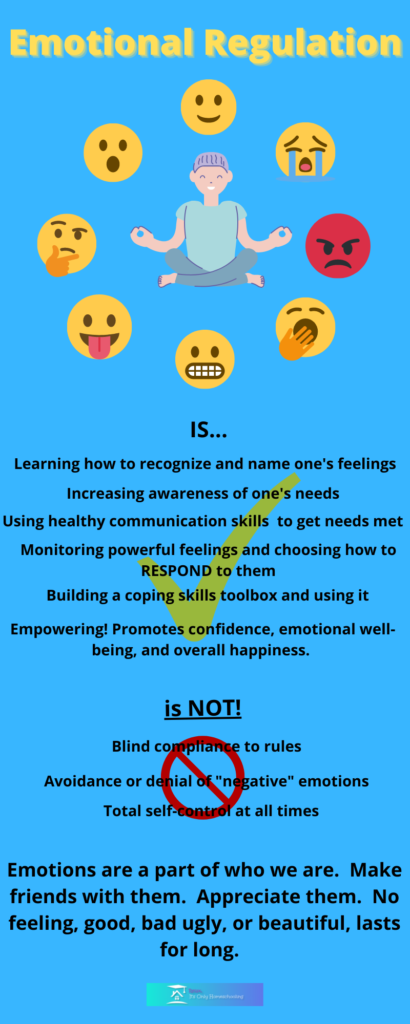
Coming Up
Over the next few blog posts, we will continue our discussion about managing emotions. Next week, we discuss the feeling-thought-behavior connection and introduce you to our first technique for coping with BIG feelings, The Power of the Pause.
Keep In Touch
Be sure you do not miss a blog post by signing up for our email list, liking our Facebook, Instagram, Linked In, or Pinterest pages, or subscribing to our YouTube channel.
Like what you see here? Sharing is caring!
Blessings,
Kimberly Bennett, LPC
IOH Mom
Founder/CEO, It’s Only Homeschooling
Founder/CEO, The Homeschool Counseling Network
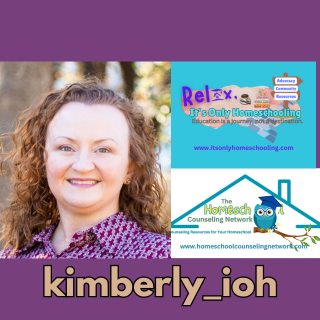
This website is not a professional counseling website and nothing here should be construed as professional counseling advice. Although Kimberly Bennett, LPC is a Licensed Professional Counselor, she is not your counselor, and no counselor-client relationship is established unless she has signed an agreement with you. All information provided through this website is for informational and educational purposes only.